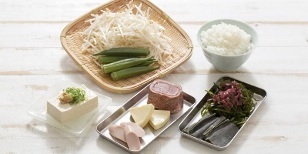
Gout was scientifically confirmed in 1865. The disease was described by Thomas Sendegum in his book A Treatise on Gout, in which he described the signs, symptoms and attacks of a disease he had suffered for 30 years.
In Hippocrates' day it was called "the king's disease. "
What is gout
Gout is a pathology associated with the deposition of salts on the joints and kidneys, and is characterized by severe pain in this area. The development of the disease causes recurrent and increased attacks, leading to the formation of tophi. These are nodules that lead to joint deformity. There is a consistent development of urolithiasis and renal failure.
Diagnostics is performed in the form of synovial fluid collection and detection of veins in it. X-rays of the affected joint were also taken. While relieving inflammation, normalizing nutrition, as well as lowering the acid in the urine, it can lead to positive results in treatment.
The disease appears more frequently in men after 40 years. Female pathology is observed in the postmenstrual period. Joint damage occurs throughout the body, but most often in the legs.
The main cause of gout:
- descent;
- eat foods with large amounts of purines;
- weak uric acid excretion from the body;
- purine nuclide catabolism.
Principles of Gout Diet
The development of gout depends on metabolic disorders in the body. For treatment, diet is an effective way. Good nutrition should be monitored daily. The main principle of a gout diet is to reduce blood salts. With its advantages, the kidneys will not be able to work on their own. Failure to follow a diet can lead to relapse. Pain attacks can start at any time. This often happens at night. If you do not follow a diet, the disease can develop and spread to all joints.
Treatment should be done at home. This includes adhering to a balanced diet. This is considered a basic and effective method. The menu is compiled by the treating physician, who takes into account the individual characteristics of the patient. Diet is very important to lower uric acid levels.
Dietary features for gout
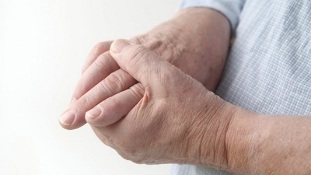
Purine should not be included in the composition of food on the gout diet, it contributes to acid accumulation. Purines are found in meat and fatty foods. Therefore, people with gout are advised to consume more vegetarian food. The recipe does not include expensive ingredients, and the cooking technique is not complicated. But it is important to combine only permitted foods.
Nutritional therapy can help treat gout symptoms at home.
Eating fatty and spicy foods leads to attacks associated with increased uric acid and severe pain rapidly. For example, drinking too much coffee containing high amounts of purine can trigger a relapse. High-risk foods include alcohol, beer, soda, and even wine. They are completely excluded from the diet of the sick.
For rapid removal of purines from the body, patients are given a large drinking regimen. The amount of fluid drunk daily reaches 2. 5 liters. In case of urolithiasis, water with alkali and sodium bicarbonate is required. It is possible to achieve urine neutralization with excess protein of plants and citrus fruits in food.
Diet for gout in the legs
The gout diet should be monitored continuously. Since treatment is carried out at home, the person suffering from the disease must have the will and not violate the developed menu. Based on the patient's condition, individual menus are made with permitted and prohibited products. Dishes can be delicious and varied despite its simplicity. The diet for gout in the legs does not have very strict restrictions, but must satisfy the sick body and improve a healthy lifestyle.
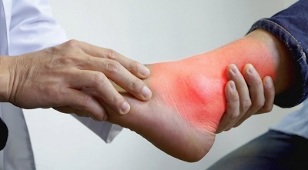
Diet Mistakes in Illness:
- eat foods that contain purines;
- alcohol abuse;
- lack of fluid in the diet;
- large amounts of animal fat;
- excessive animal protein intake;
- table salt and pickles;
- the amount of bad vegetables and fruits in the daily diet.
Foods allowed and prohibited in the gout diet
On a gout diet, patients, in addition to the main treatment, need to know about allowed and forbidden foods. It is impossible to cure this disease or get rid of the symptoms without following the rules in nutrition.
Prohibited Products:
- bread products, i. e. rich products;
- meats (beef, lamb, pork, sausage);
- seafood (fat type);
- salty and spicy milk;
- beans;
- vegetables (sorrel, mushrooms);
- fruits (grapes, raspberries, figs);
- mayonnaise;
- sweets and pastries;
- animal fats;
- alcoholic beverages;
- black tea, coffee;
- sauce (mustard, radish);
- spices and herbs.
Watch out!The above products should not be eaten or added to patient food!
At first glance, the gout menu may seem dull and unbearable. Actually, this is not the case.
There is a list of products that are allowed to be eaten without health risks:
- bread products - uncomfortable pastries;
- meat - rabbit and chicken;
- boiled fish meat (low fat variety);
- eggs (1 piece a day);
- dairy products (low in fat and not salty);
- is not a bean;
- vegetables (potatoes, carrots, onions, garlic, tomatoes);
- fruits (green apples, apricots, oranges);
- vegetable fats;
- fruit tea, natural juice from approved products.
You can also change your diet with seeds and nuts:
- walnut;
- level;
- badam;
- hazelnut;
- pistachio.
Peanuts are high in purine and should therefore be eliminated from the diet.
This is exciting!There is a debate among scientists about the use of tomatoes in the diet of patients. However, they contain small amounts of oxalic acid. It turns out that red vegetables are harmless, but instead useful because of antioxidants and phytonutrients. They eliminate the inflammation that is common in gout. This shows that tomatoes can be eaten with gout in any quantity.
Contraindications to gout
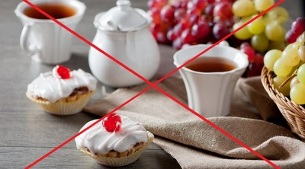
The most popular foods have contraindications to the gout diet. Due to the chronic pathology, you can and should get used to washing dishes, as it aims to relieve symptoms and reduce pain significantly. Diet must be adhered to at all times. Because a cup of coffee or grape can cause an attack of pain.
During the period of exacerbation of gout, medication is used in accordance with diet. Bedding is also required. All this stops the inflammatory process. When preparing food for patients, it is best to keep a table with food that is allowed and forbidden in a prominent place.
Limit your intake of meat and fish to twice a week. On the doctor's recommendation, fish should be eaten with gills and scales. These fish by-products are very good for removing toxins from the body. In the event of a pain attack, the use of this product is delayed for several weeks.
Semi-finished products and canned foods are categorized as contraindicated. Diet No. 6 prohibit the use of broth. After all, soup and borscht are prepared based on it. The fact is that this exception is quite justified, due to the addition of various spices and seasonings that can provoke an attack. It is correct to cook the meat separately, and use the gravy from the vegetables as the gravy. During the cooking process, the water is drained and changed several times. This reduces the concentration and purifies the purine from the composition.
Diet for gout: menu for the week
This disease is incurable, especially if the pathology persists with diabetes or obesity. To reduce relapse and exacerbation with gout, a special diet is used - table number 6.
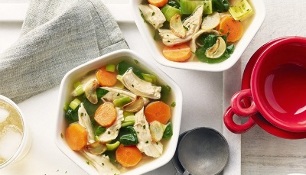
The gout diet can be followed at all times, although this menu is designed for a week. This diet was developed by the attending physician.
There may be several options for such a diet, which do not differ much from each other. The process uses conventional cooking technology.
Monday
- tea with cranberry syrup, boiled eggs, tomato salad, rye bread;
- freshly squeezed apple juice, boiled vegetables;
- beet salad, boiled turkey, boiled pumpkin, compote;
- boiled potatoes with cheese, salad with cabbage, rosehip tincture.
- kefir.
Tuesday
- cottage cheese pudding with sour cream, green tea with honey;
- bran biscuits, chicory drinks;
- noodle soup with vegetables, steamed chicken pieces, fruit drinks;
- vegetable stew, compote;
- curdled milk.
Wednesday
- pumpkin pancakes, porridge with buckwheat in milk, tea;
- green apple;
- vegetable and rice soup, boiled cod, beet salad, carrot juice;
- buckwheat with stew, apple juice, biscuit liver;
- wheat bran broth.
Thursday
- borscht without meat, milk, croutons;
- toast with cheese, chamomile tea;
- mashed potatoes with meatballs, potato pancakes, pancakes, compote;
- baked zucchini, fruit salad, milk tea;
- fermented roasted milk.
Friday
- oatmeal, vegetable salad, cherry juice;
- watermelon watermelon, lemon, strawberry and pear, bread;
- mashed potatoes, rabbit stew, cabbage salad, tea;
- boiled eggs, barley soup, jelly;
- oven baked apples with cottage cheese, rosehip tea.
Saturday
- wheat porridge, chicory drink;
- gingerbread with kefir;
- boiled chicken with buckwheat, eggplant caviar, tea;
- diet pilaf, cucumber salad, bread, jelly;
- varenet.
Sunday
- casserole with cottage cheese, pancakes with cottage cheese, tea;
- omelet with quail eggs (4 seeds. );
- cheese puree soup, garlic bread, rosehip tea;
- rice with boiled vegetables, beet salad;
- yogurt.
This is a rough menu without forbidden foods for people with gout. A balanced and complete diet allows you to use it for a long time. To achieve a greater effect, it is necessary to perform fasting days.
Diet for gout: nutritionist reviews
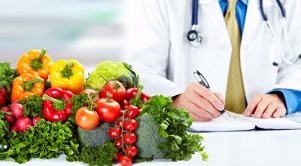
The comments of the professor of the Department of Gastroenterology and Dietetics are as follows. With ineffective drug treatment, diet for gout is the main treatment.
The severity of the process influences the nutritional approach in the treatment of patients, namely:
- seizure frequency;
- plasma uric acid levels;
- patient weight.
In the diet, the amount of purines, fats, proteins, sodium salts and alcohol should be minimized.
Eating a diet will reduce plasma uric acid quickly and restore normal levels. Effective effect and healing based on natural ingredients.















































































